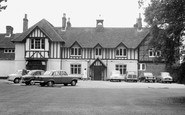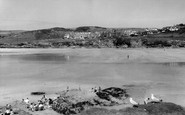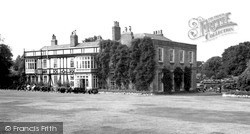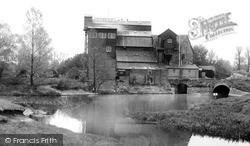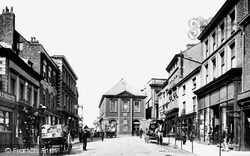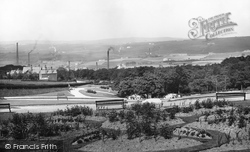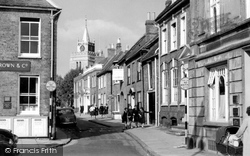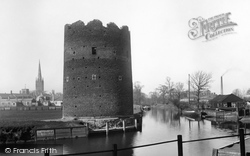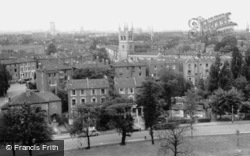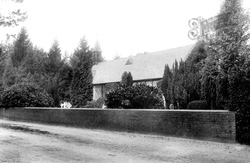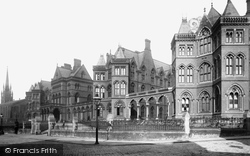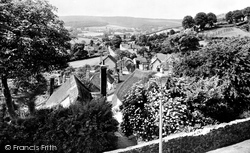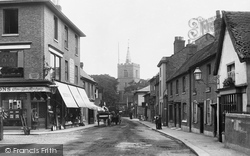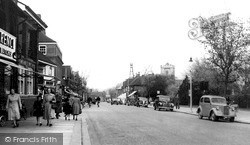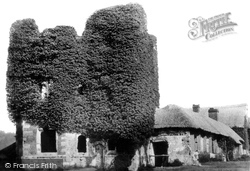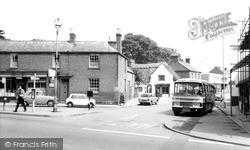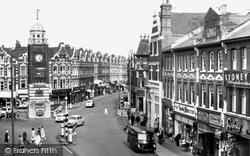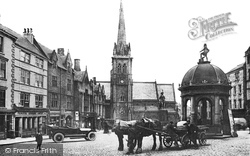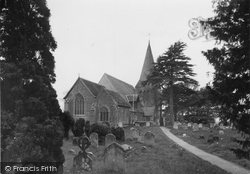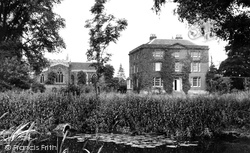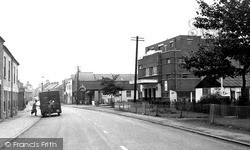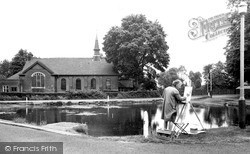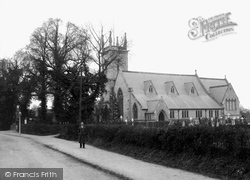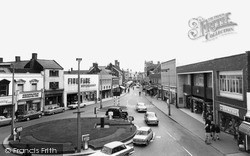Places
Sorry, no places were found that related to your search.
Photos
Sorry, no photos were found that related to your search.
Maps
Sorry, no maps were found that related to your search.
Books
Sorry, no books were found that related to your search.
Memories
655 memories found. Showing results 151 to 160.
Eskdale Cumbria And Another Hectic Break
My son Matthew provided the opportunity to once again retrace our well worn steps around this beautiful county and in particular The Lake District. As is our norm it was non-stop driving and walking, although ...Read more
A memory of Ambleside by
Evacuated To Great West Farm
My mother Eileen and her brother Ian Carter were evacuated to Great West Farm, Quethiock in 1940. Here are her memories of that time:- On June 16th 1940 we were evacuated from Marvels Lane School, Grove Park, London ...Read more
A memory of Quethiock by
Evacuee
I was evacuated from London to Oxford with Burlington School on 1st September 1939. At first we had our lessons in the old Milham Ford School premises but after a few weeks transferred to the new school in Marston where we shared the ...Read more
A memory of Oxford in 1940 by
Evacuee
My Grandmother rented a cottage (Era Goch) during the war and I went to live with her as a sort of evacuee. I used to attend the one room school in Dwyran. I played with my friends on the beach. I don't know how we did not drown as we would ...Read more
A memory of Dwyran in 1940 by
Evacuee During The Second World War
Dear Mr Lord, My sister Jean Marie Church and I, Marie Elizabeth Church, attended Findern School for four years plus during the Second World War. I was almost 7 years old, my sister almost 6 years old. As I ...Read more
A memory of Findern in 1940 by
Evacuee During World War 2
I was privately evacuated to Croxton Kerrial with my sister in 1940, we were billeted in a cottage named Woodbine Cottage, this was next to the Bakery. We attended the village school, I still remember some of the ...Read more
A memory of Croxton Kerrial in 1940 by
F 18a Short Biographical Reminiscence
F-18 From a distance, Tam watched in silence. Like him, the monster had remained in the same place all night, dormant; poised. His eyes hurt from too many fags, the odd tear, and staring ahead into the ...Read more
A memory of Whiteinch in 1962 by
Fairdene School
I was a pupil at Fairdene School from 1960-1965. I had lived in New York until I was 6, so being a girl with a Yankee accent in a school for young ladies was quite a challenge! The two female headmistresses, Miss Turner and Miss ...Read more
A memory of Chipstead by
Family Holidays
We had many happy family holidays at Polzeath. We always stayed in a bungalow above Tristram Cliff and could walk down across the fields to the beach. In the early days cars were not confined to the area at the top of the beach and ...Read more
A memory of Polzeath in 1960 by
Family Of William Churchill
I live in Hertfordshire but once lived in Acocks Green. By chance I have met a local elderly lady called Coral (also a Brummie) who tells me that her late grandfather, William Churchill, lived just off Lincoln ...Read more
A memory of Acock's Green in 1940 by
Captions
405 captions found. Showing results 361 to 384.
Through the 16th century, and into the 17th, rooms were added; in c1820 the brick wing clearly visible in the photograph was built.
In the early 1970s the mill was a definite 'No Go' area for Kempston children. Semi-derelict; a collection of rusting iron and crumbling brick, its former glories (few) were well hidden.
Wrexham stands on a tributary of the river Dee. It has a long history - it was known to the Saxons as Wrightesham or Wrightelesham.
This view from the top of Whitehall Park looks over the flower beds to Darwen beyond.
In front of the church is the County Museum; nearer the camera, behind the 'No Waiting' sign, is one of Aylesbury's best town houses, with arched sash windows to the ground floor.
This massive medieval structure, formed of flint and ruddy Dutch bricks, squats close by the river, near Bishop Bridge.
This view is from an upper balcony of Eldon House, one of the eleven-storey blocks of council flats built c1960 on the Loughborough Estate.
Nine Mile Ride runs east to west from south Easthampstead to south of the Arborfield Garrison, originally cutting through Windsor Forest; it is now developed with long lines of bungalows.
This imposing brick building was built in the Gothic style to the design of George Gilbert Scott in 1868. In the distance is St George's church, another Victorian creation.
The architectural style is actually one which is common to areas around the Bristol Channel.
Although Church Street has had much rebuilding in recent years it still retains its character and is one of the best streets in the old town.
The High Street of the old village, now traffic calmed, has shops somewhat marred by security shutters, but in the 1950s all that was in the future.
The High Street, fashioned in the 1930s, drops down to the original village centre, with the graveyard to St Martins church on the immediate right.
Built by Archbishop Warham in the early 16th century, this small manor house, consisting of a three-storey brick tower, a gallery (later turned into cottages), and the single-storey storehouse beyond
The battlemented tower of St Bartholomew's (left) just shows above the row of rather good brick and tile cottages, into which the post office has been thrust.
The battlemented tower of St Bartholomew's (left) just shows above the row of rather good brick and tile cottages, into which the post office has been thrust.
This area was called Crouche in 1400; the name derives from Old English 'cruc' or cross, but does this mean cross-roads or near to the cross?
This wonderful photograph shows a beautiful convertible car, probably belonging to one of the landed gentry; the two delivery men enjoy a break whilst their horses tuck into their nosebags; and the little
All Saints' Church looks out over the marshes by Church Farm, and stands at the west gates to the castle (not now the public entrance, which is from the Wartling Road).
At the end of Church Lane to the west of All Saints' Church the base of a medieval cross survives with its new shaft and head of the 1920s.
Syston, a Domesday village situated about four miles north of Leicester, was industrialised by an influx of framework knitters in the 19th century, which generated standardised red brick buildings
This lovely village extends from Highwood Hill to the north to Mill Hill East underground station in the south.
The foundation stone was laid by the Hon Miss Mary Ann Ursula Addington, daughter of Viscount Sidmouth, on 20 April 1843 after a service conducted by the Vicar of Sonning, the Rev Hugh Nicholas Pearson
The modern architecture sits very uncomfortably with the earlier buildings – an example is the Fine Fare building, which now houses Super Drug.
Places (0)
Photos (0)
Memories (655)
Books (0)
Maps (0)

